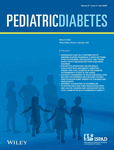Costs and outcomes of “intermediate” vs “minimal” care for youth-onset type 1 diabetes in six countries
Funding information: Leona M. and Harry B. Helmsley Charitable Trust, Grant/Award Number: 2019PG-T1D023; Pittsburgh Epidemiology of Diabetes Complications (EDC), Grant/Award Number: R01-DK-034818
Abstract
Objective
Data are needed to demonstrate that providing an “intermediate” level of type 1 diabetes (T1D) care is cost-effective compared to “minimal” care in less-resourced countries. We studied these care scenarios in six countries.
Methods
We modeled the complications/costs/mortality/healthy life years (HLYs) associated with “intermediate” care including two blood glucose tests/day (mean HbA1c 9.0% [75 mmol/mol]) in three lower-gross domestic product (GDP) countries (Mali, Tanzania, Pakistan), or three tests/day (mean HbA1c 8.5% [69 mmol/mol]) in three higher-GDP countries (Bolivia, Sri Lanka, Azerbaijan); and compared findings to “minimal” care (mean HbA1c 12.5% [113 mmol/mol]). A discrete time Markov illness-death model with age and calendar-year-dependent transition probabilities was developed, with inputs of 30 years of complications and Standardized Mortality Rate data from the youth cohort in the Pittsburgh Epidemiology of Diabetes Complications Study, background mortality, and costs determined from international and local prices.
Results
Cumulative 30 years incidences of complications were much lower for “intermediate care” than “minimal care”, for example, for renal failure incidence was 68.1% (HbA1c 12.5%) compared to 3.9% (9%) and 2.4% (8.5%). For Mali, Tanzania, Pakistan, Bolivia, Sri Lanka, and Azerbaijan, 30 years survival was 50.1%/52.7%/76.7%/72.5%/82.8%/89.2% for “intermediate” and 8.5%/10.1%/39.4%/25.8%/45.5%/62.1% for “minimal” care, respectively. The cost of a HLY gained as a % GDP/capita was 141.1%/110.0%/52.3%/41.8%/17.0%/15.6%, respectively.
Conclusions
Marked reductions in complications rates and mortality are achievable with “intermediate” T1D care achieving mean clinic HbA1c of 8.5% to 9% (69-75 mmol/mol). This is also “very cost-effective” in four of six countries according to the WHO “Fair Choices” approach which costs HLYs gained against GDP/capita.




